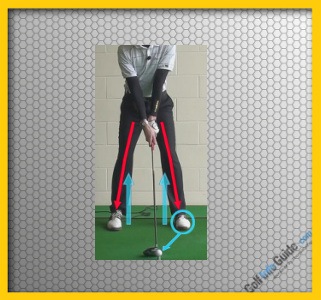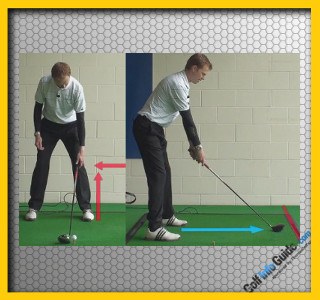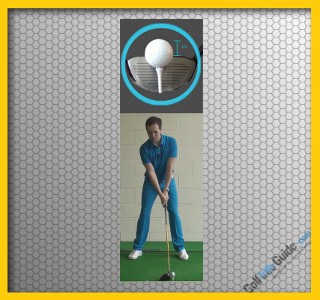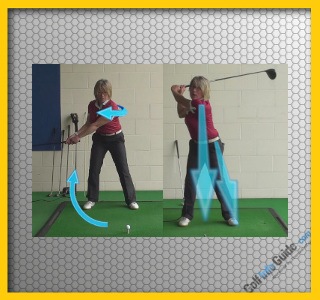The driver is likely the most intimidating club to learn in golf. Beginning golfers are at the mercy of information overload on the correct way to learn and play golf. With new golfers, the way they receive information needs to be uncomplicated and easy to remember.
In the set of tips below, we will assume that you have had some basic instruction regarding the fundamentals i.e. grip, posture, alignment, ball position etc. The following information will give you further advice on how to assist with getting the driver to become a friend and not a foe.

When a beginner goes through their first lessons or clinics in golf, the instruction tends to be very basic. One of the first fundamentals covered is posture. A part of this is our stance and how wide it should be at the address position. Many new golfers are under the impression that the golf stance should only be as wide as the width of their shoulders. This is untrue for most of our clubs in the bag. Wedges should see a narrow stance while our longer clubs like a driver and 3 wood should see a stance that’s wider than the width of our shoulders.
The driver is the longest club in our bag and we want to create a wide stance to allow for this length when we swing. This will help in shallowing out the swing through impact and promotes solid contact with the ball on the upswing.

Proper ball position with a driver is imperative when learning proper driving technique. The tendency in most beginners is to have a neutral ball position in the middle of their stance. Due the length of our driver, we need to have a ball position set a little further up in the stance. The ideal ball position for a driver is found between the in-step of the left heel (right heel for a left handed golfer) and no further than the outside of the foot.
Proper ball position set forward in the stance allows for the longer driver to fully rotate and square up. It also helps to promote contact on the upswing. Unlike irons where we like to see the club contact the ball first and then the ground, with the driver we like to have contact on the upswing to help create less spin on the ball. Less spin on the ball means straighter drives.

When setting up to hit a drive, we need to ensure our hands are in correct position. We should not see the hands too close to the body as this creates poor technique in the first quarter of the swing. We also like to see a straight line relationship between the lead arm and the club shaft.
The ideal hand position for the driver is to have the butt end of the club pointing at your belt buckle and approximately 10 to 12 inches away from the body. We need to create a little more space away from the body with the driver because of the length of the club. At 45.5” long, many new golfers do not adjust appropriately that a driver has the most length than any other club in the bag. The space we create assists in shallowing out the swing and making solid contact with the driver.

Once we have correct ball position, wide stance and proper hand position the next tip is to tee the ball up higher than normal. An image most people are familiar with when they watch live golf, is after a professional hits a drive the tee pops out of the ground and flips in the air. This is a result of them teeing the ball higher and the club striking the ball on the upswing.
Some people tee it up real high, but for most beginners the ideal height is to take a 2.75” standard length tee for and barely put it in the ground. The next step is to make sure you don’t set up with the club face right up against the ball. But rather, leave a few inches of space between the ball and club face. Again, this helps in hitting the ball on the upswing and launching the ball higher in the air.

The final tip for successful tee shots with the driver is to take the club away low to the ground and slow. A big mistake made by beginner golfers is the perception that the driver is hit the furthest therefore it must be swung the fastest and hardest. Always remember that while swinging the driver it will pick up a lot of speed just due to the club’s length.
Therefore, a great swing thought to have before you start your swing is “keep it low and slow”. This will help in developing good tempo and reduce the effect of spin on the ball thus keeping your tee shots straight.






